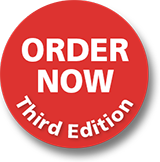Chapter 12 – Phonics
Chapter Summary
Phonics is a ‘constrained’ literacy skill that is readily teachable because it is finite; for example, the 26 letters of the alphabet, or a set of 20 to 30 common spelling rules (Snow & Matthews 2016). Phonics skills have a ceiling, and most young children can and do achieve perfect performance. In a review of the many diverse ways to teach phonics, Torgerson, Brooks and Hall (2006, p. 42) recommend that, ‘since there is evidence that systematic phonics teaching benefits children’s reading accuracy, it should be part of every literacy teacher’s repertoire and a routine part of literacy teaching, in a judicious balance with other elements’. A combined approach of synthetic phonics and analogy, using word families, appears to enable more children to acquire decoding skills in a shorter time period (NICHD 2000; Pressley, Gaskins & Fingeret 2006).
Phonics is one of the information sources that children will use to identify unfamiliar words. Phonics is part, but not all, of what children need in order to read and write. The content of phonics includes letter identification, onset and rime, blends and digraphs. Structural analysis includes exploring compound words, prefixes, suffixes and base words. Teachers can assess children’s knowledge of phonics and plan word work programs to develop their use of phonics.
Study Questions
Main ideas
What is the alphabetic principle?
How do you define phonics?
There are many scope and sequences for teaching phonics. Which sequence do you think works best and why?
Application to a developmental stage
Onset and rime are important for beginning readers and writers. Can you explain why?
Diverse learners
Why is assessment of children’s knowledge of letter sounds most important for children in the early years?
Assessment
Watch the videos of assessment of letter sounds and word reading. Score each child and plan what teaching is required next for that child.

